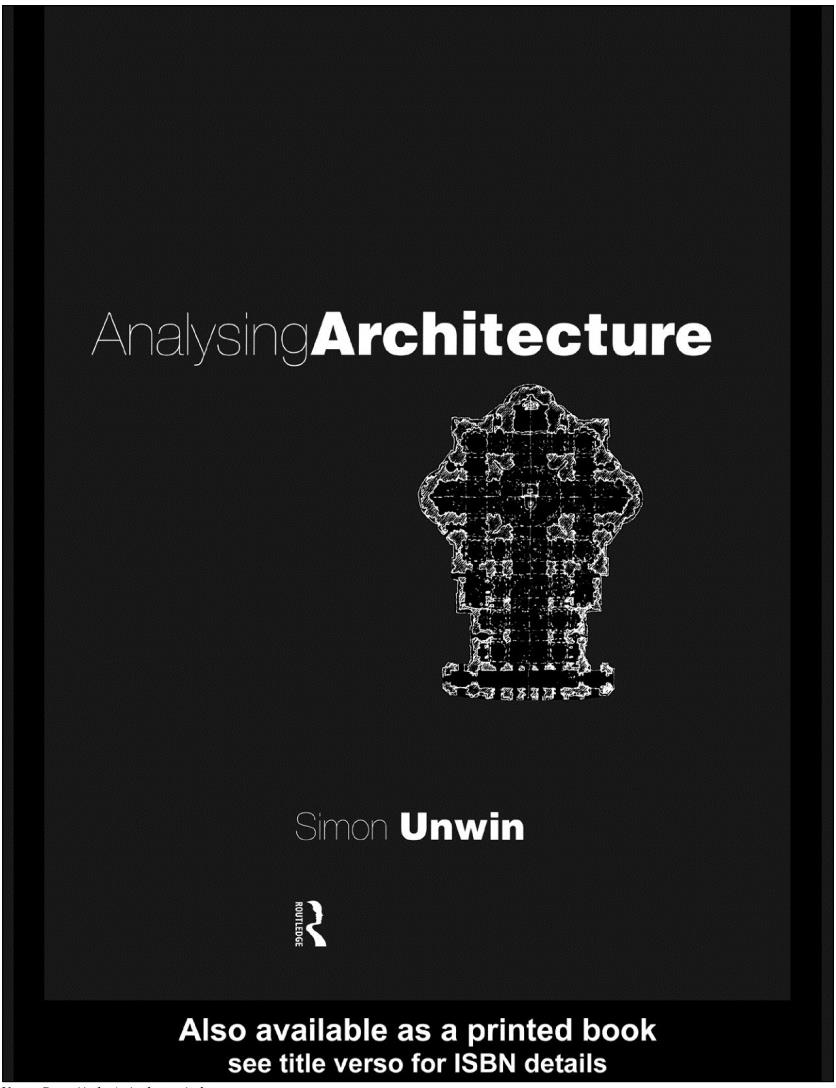
AnaysingArchitecture 马乐超开命动 Simon Unwin Also available as a printed book see title verso for ISBN details
Copyright ?1997. Routledge. All rights reserved. May not be reproduced in any form without permission from the publisher, except fair uses permitted under U.S. or applicable copyright law. Unwin, Simon(Author). Analysing Architecture. London, UK: Routledge, 1997. p i. http://site.ebrary.com/lib/sjtu/Doc?id=10057283&ppg=1
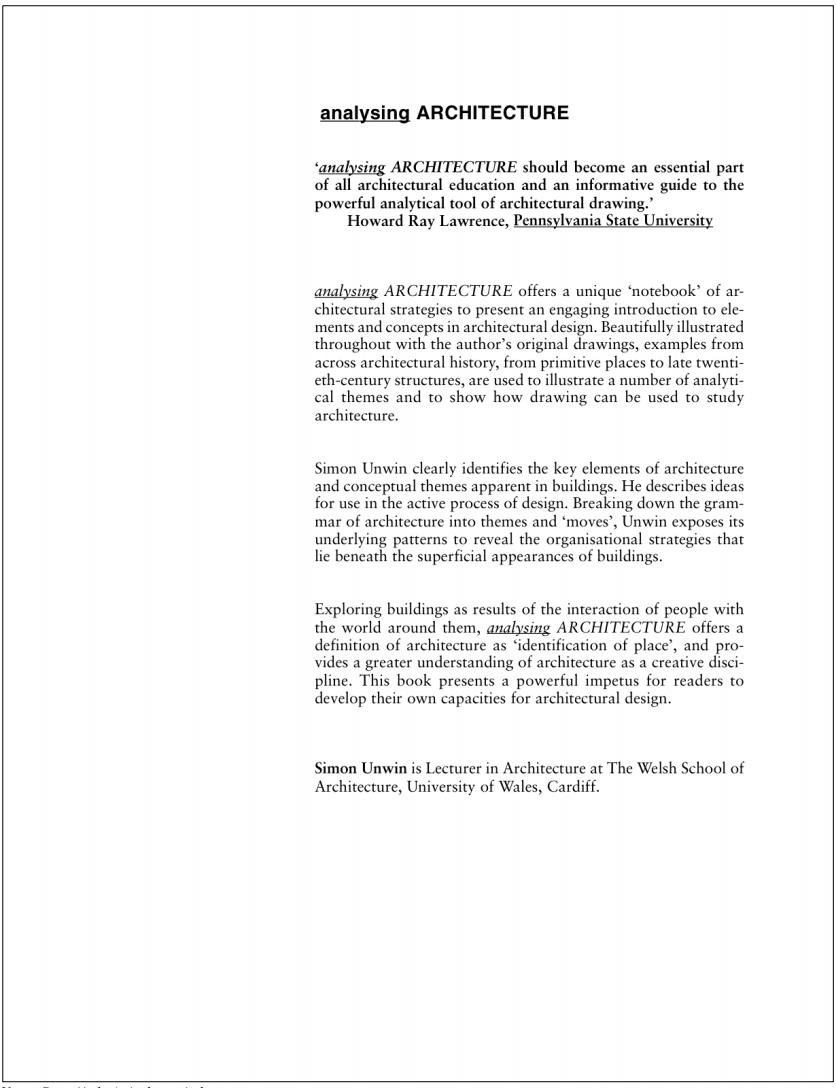
analysing ARCHITECTURE 'analysing ARCHITECTURE should become an essential part of all architectural education and an informative guide to the powerful analytical tool of architectural drawing.' Howard Ray Lawrence,Pennsylvania State University analysing ARCHITECTURE offers a unique 'notebook'of ar- chitectural strategies to present an engaging introduction to ele- ments and concepts in architectural design.Beautifully illustrated throughout with the author's original drawings,examples from across architectural history,from primitive places to late twenti- eth-century structures,are used to illustrate a number of analyti- cal themes and to show how drawing can be used to study architecture. Simon Unwin clearly identifies the key elements of architecture and conceptual themes apparent in buildings.He describes ideas for use in the active process of design.Breaking down the gram- mar of architecture into themes and 'moves',Unwin exposes its underlying patterns to reveal the organisational strategies that lie beneath the superficial appearances of buildings. Exploring buildings as results of the interaction of people with the world around them,analysing ARCHITECTURE offers a definition of architecture as 'identification of place',and pro- vides a greater understanding of architecture as a creative disci- pline.This book presents a powerful impetus for readers to develop their own capacities for architectural design. Simon Unwin is Lecturer in Architecture at The Welsh School of Architecture,University of Wales,Cardiff
Copyright ?1997. Routledge. All rights reserved. May not be reproduced in any form without permission from the publisher, except fair uses permitted under U.S. or applicable copyright law. Unwin, Simon(Author). Analysing Architecture. London, UK: Routledge, 1997. p 1. http://site.ebrary.com/lib/sjtu/Doc?id=10057283&ppg=2
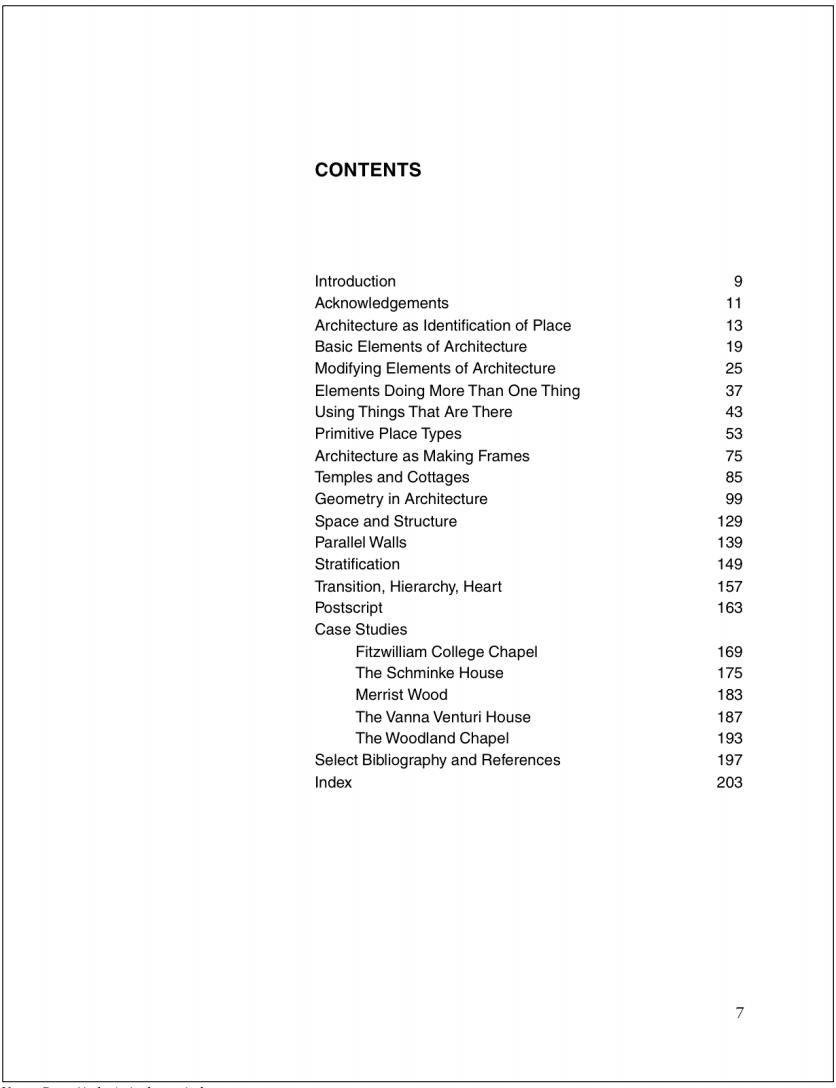
CONTENTS Introduction 9 Acknowledgements Architecture as Identification of Place 13 Basic Elements of Architecture 19 Modifying Elements of Architecture 25 Elements Doing More Than One Thing 37 Using Things That Are There 43 Primitive Place Types 53 Architecture as Making Frames 75 Temples and Cottages 85 Geometry in Architecture 99 Space and Structure 129 Parallel Walls 139 Stratification 149 Transition,Hierarchy,Heart 157 Postscript 163 Case Studies Fitzwilliam College Chapel 169 The Schminke House 175 Merrist Wood 183 The Vanna Venturi House 187 The Woodland Chapel 193 Select Bibliography and References 197 Index 203 7
Copyright ?1997. Routledge. All rights reserved. May not be reproduced in any form without permission from the publisher, except fair uses permitted under U.S. or applicable copyright law. Unwin, Simon(Author). Analysing Architecture. London, UK: Routledge, 1997. p 7. http://site.ebrary.com/lib/sjtu/Doc?id=10057283&ppg=8
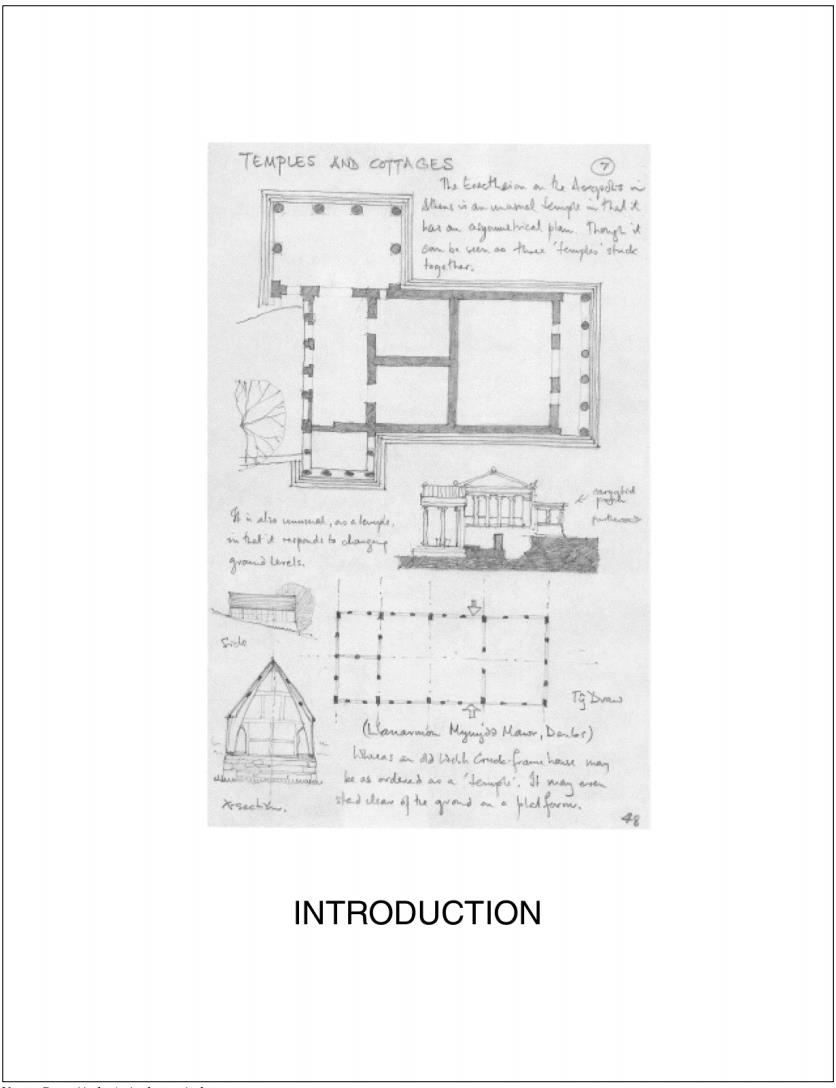
TEMPLES AN COTTAGES ⑦ 九无Ae4 an或h大 bat a afyemthreal piac Thnrt mnn九u中eop'k女 3t 么:小wn以,s6-中 nnh台学T Lrels. To bm.3 a Hpui9以ar,bbt) 太A)Al.Cndk fa一hw 衣4el以 山明wyn。He6 48 INTRODUCTION
Copyright ?1997. Routledge. All rights reserved. May not be reproduced in any form without permission from the publisher, except fair uses permitted under U.S. or applicable copyright law. Unwin, Simon(Author). Analysing Architecture. London, UK: Routledge, 1997. p 8. http://site.ebrary.com/lib/sjtu/Doc?id=10057283&ppg=9
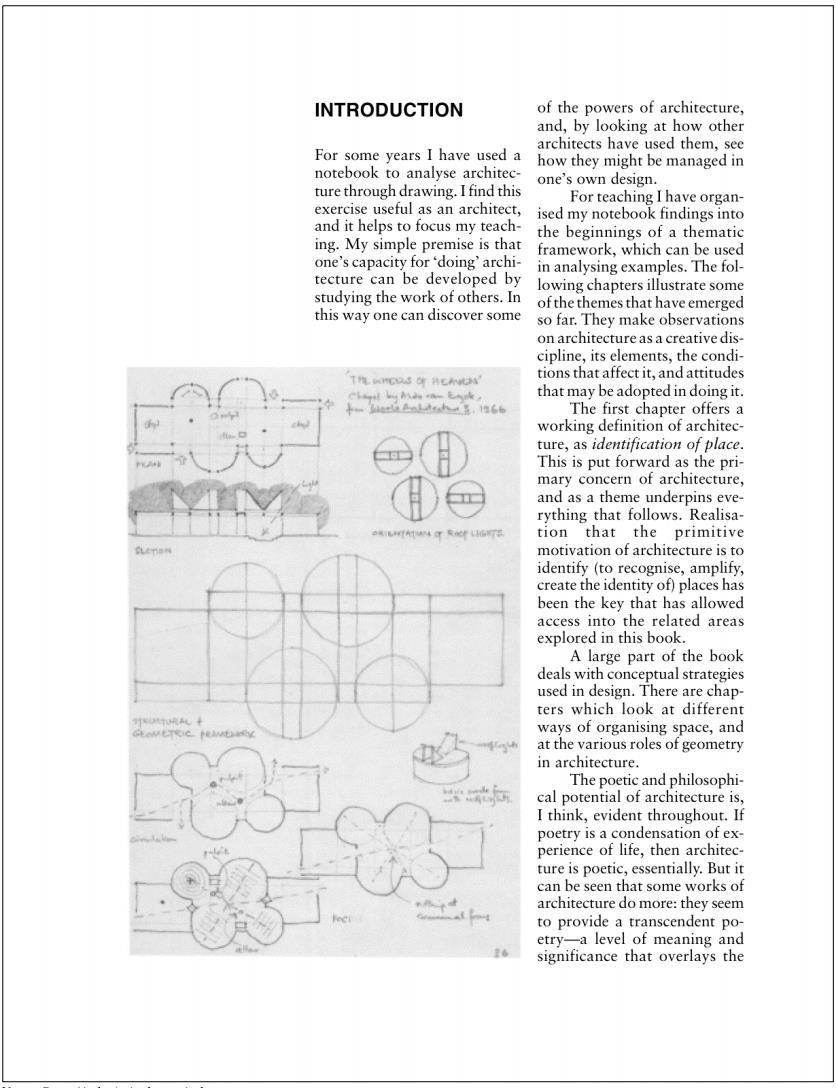
INTRODUCTION of the powers of architecture, and,by looking at how other architects have used them,see For some years I have used a how they might be managed in notebook to analyse architec- one's own design. ture through drawing.I find this For teaching I have organ- exercise useful as an architect, ised my notebook findings into and it helps to focus my teach- the beginnings of a thematic ing.My simple premise is that framework,which can be used one's capacity for'doing'archi- in analysing examples.The fol- tecture can be developed by lowing chapters illustrate some studying the work of others.In of the themes that have emerged this way one can discover some so far.They make observations on architecture as a creative dis- cipline,its elements,the condi- T作nOO3的韩EUN tions that affect it,and attitudes that may be adopted in doing it. The first chapter offers a working definition of architec- ture,as identification of place. This is put forward as the pri- mary concern of architecture, and as a theme underpins eve- rything that follows.Realisa- tion that the primitive motivation of architecture is to identify (to recognise,amplify, create the identity of)places has been the key that has allowed access into the related areas explored in this book. A large part of the book deals with conceptual strategies used in design.There are chap- ters which look at different ways of organising space,and at the various roles of geometry in architecture. The poetic and philosophi- cal potential of architecture is, I think,evident throughout.If poetry is a condensation of ex- perience of life,then architec- ture is poetic,essentially.But it can be seen that some works of architecture do more:they seem to provide a transcendent po- etry-a level of meaning and significance that overlays the
Copyright ?1997. Routledge. All rights reserved. May not be reproduced in any form without permission from the publisher, except fair uses permitted under U.S. or applicable copyright law. Unwin, Simon(Author). Analysing Architecture. London, UK: Routledge, 1997. p 9. http://site.ebrary.com/lib/sjtu/Doc?id=10057283&ppg=10